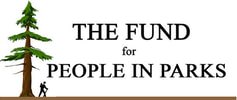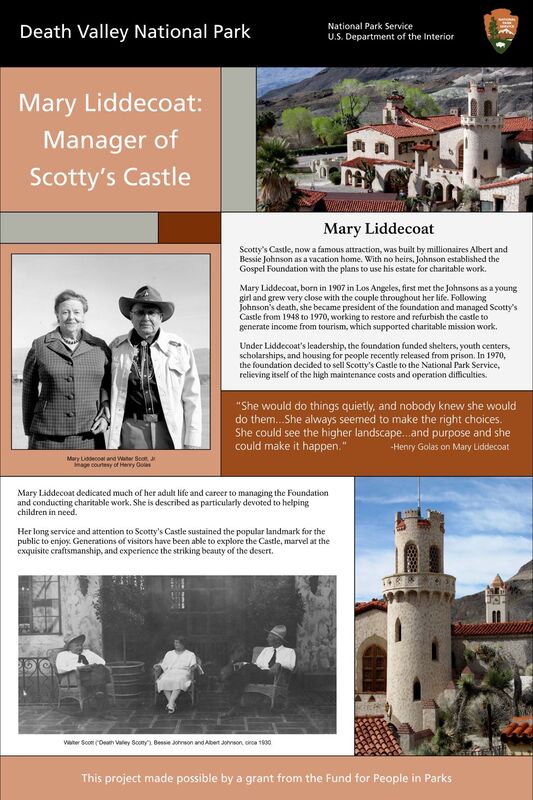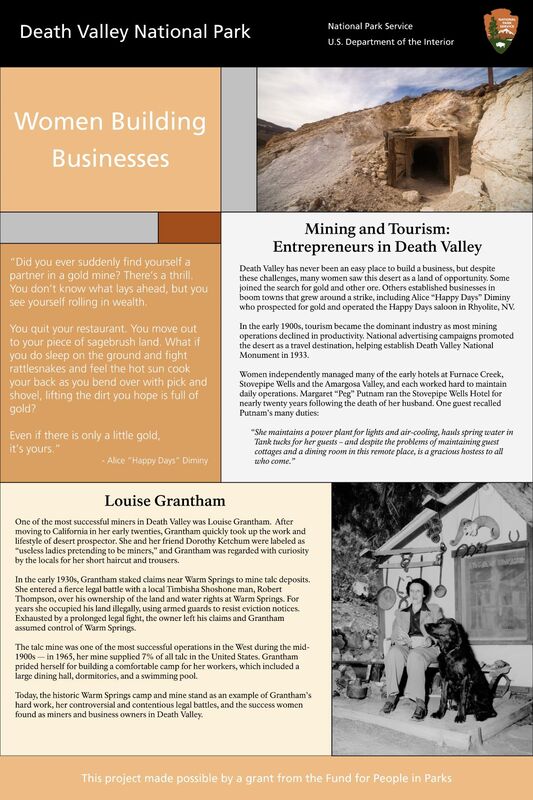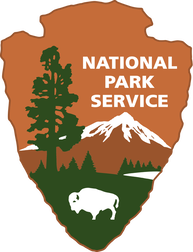Death Valley National Park
Women of Change History Exhibit
Women of Change History Exhibit
|
National Monument
1933 National Park 1994 Park Size 3.4 million acres, 91% wilderness Annual Visitors 1.1 million Park Fee $30 Superintendent Mike Reynolds Park Partner Death Valley Natural History Association Location Inyo and San Bernardino Counties, CA, Nye County, NV |
Death Valley National Park is known worldwide for its vast landscapes, record-setting temperatures, and rich human history. However, over the years, the National Park Service has tended to focus its narratives on the white, heterosexual, male experience. In 2020, the park received a grant from the National Park Foundation to dig into the archives and highlight stories that give a fuller picture of the park's history.
Female activists from the Timbisha Shoshone tribe successfully fought on behalf of their homeland rights in Death Valley. Women who might today identify as part of the LGBTQ+ community were successful entrepreneurs and authors in the region. The were also women explorers, scientists, and artists who all shaped the park in various ways. Women are a rich part of Death Valley's past and present. The Fund for People in Parks provided a grant to the Death Valley Natural History Association to continue this research, record oral histories, and create Women of Change, an online exhibit, an in-person exhibit at the Furnace Creek Visitor Center, as well as a new educational sign at the remote Warm Springs site. The exhibit was completed in December 2022, and all visitors can now learn about Death Valley from a wider variety of perspectives. Project Cost: $20,892 Project Completed: 2022 History may not be the first thought on a visitor’s mind when coming to Death Valley. The normalization of women’s history in parks that the public sees as 'nature parks' will develop a more well-rounded experience that may attract new generations of visitors that value a more complicated history. By sharing the diverse stories of women in Death Valley, both in the park and online, we are able to work towards a park experience that is more reflective of our visitors and paints a more authentic picture of this piece of America." |





